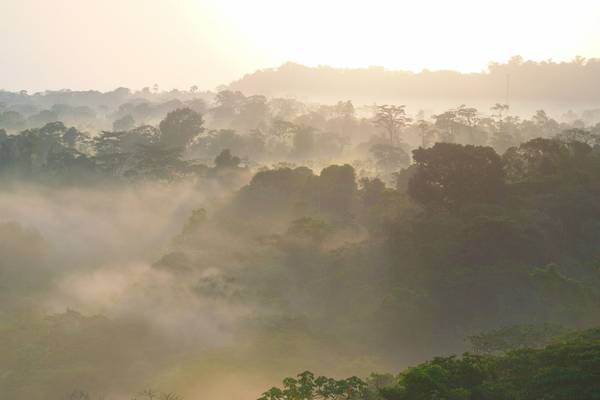Wildlife Holidays in Costa Rica






Few countries on Earth offer such an intense wildlife experience as Costa Rica. Despite its small size (just 0.1% of the world’s landmass), it contains an astonishing 5% of all known biodiversity. This natural abundance stems, in large part, from Costa Rica’s remarkably varied habitats, from dazzling Pacific and Caribbean beaches, through lush lowland jungles and marshes, to the mist-cloaked cloud forests and alpine paramo of the country’s mountain spine. An impressive 25% of these ecosystems is formally protected, providing refuge for Costa Rica’s 950 recorded bird species, 250 mammals, 400 reptiles and amphibians, over 12,000 plants, and hundreds of thousands of fascinating insects (many of which are yet to be scientifically described).
Speak with our Costa Rica specialist

Our Specialist Recommends
“If birds are your focus, I'd recommend our 16-day bird watching tour to Costa Rica, which visits a cross section of Costa Rica's habitats and altitudes. It's possible to see over 30 species of hummingbird, Scarlet Macaws flying to their night-time roosts, and arguably the world's most beautiful bird, the Resplendent Quetzal. We also offer an 11-day holiday which combines birdwatching in the highlands of the Talamanca Mountains with a visit to the lowland rainforests of Tortuguero National Park, while our Best of Southern Costa Rica holiday explores the little-known, but superb, Corcovado National Park in the south, one of the most biologically diverse places on the planet.”
Operations Manager - Dan LayNaturetrek Tours to Costa Rica
This network of protected areas provides opportunities for endless exploration. In the Pacific lowlands, Carara National Park supports one of Costa Rica’s most impressive bird assemblages; within its rainforests thrive such iconic and spectacular species as Scarlet Macaw, Yellow-throated Toucan, Black-headed Trogon and Great Tinamou, while verdant mangrove swamps are home to Boat-billed Heron, Roseate Spoonbill and Royal Tern. Across the country, on the Caribbean coast, the tree-clad waterways and brilliant sandy beaches of Tortuguero National Park are no less awe-inspiring. Here, visitors can watch Green Turtles come ashore to lay their eggs, and search for such elusive riverine creatures as Sungrebe, Agami Heron, American Pygmy Kingfisher and even Neotropical Otter, while Keel-billed Toucan, Geoffroy’s Spider Monkey and White-faced Capuchin patrol the canopy above.
At middle elevations, the stunning La Selva Biological Station, on the banks of the Sarapiqui River, offers chances to see Great Curassow, Great Green Macaw, Snowy Cotinga, Sunbittern, Brown-throated Three-toed Sloth, Collared Peccary and Northern Tamandua. Then there is Arenal, where a postcard-perfect cone volcano looms over dense mountain forests, home to Scarlet-rumped and Bay-headed Tanagers, Tawny-capped Euphonia, Rufous-tailed Jacamar, Violet-headed Hummingbird, White-nosed Coati and Red-eyed Tree Frog.
Costa Rica’s highland spine is made up of the Talamanca Mountains, rising to a towering 3820 metres above sea level. Here, ethereal cloud forests cloak the slopes and ridges, supporting a dazzling assortment of hummingbirds: Talamanca, Fiery-throated, Volcano, and White-throated Mountain-gem. Other feathered delights include Collared Whitestart, Flame-throated Warbler, Spangle-cheeked Tanager and Emerald Toucanet, but despite this embarrassment of avian riches, there is one species that stands out: the mesmerising Resplendent Quetzal. Arguably the most beautiful bird in the world, this extravagant species reaches near-mythological status, and is the highlight of any birding tour of Costa Rica.
The jewel in Costa Rica’s crown, however, is undoubtedly the wilderness of Corcovado National Park, on the remote Osa Peninsula. Described by National Geographic as the “most biologically intense place on Earth”, this sprawling, riotous jungle is the largest primary forest left on the Pacific coast of the Americas. Birds abound, from macaws to Blue-diademed Motmot (and even the occasional Harpy Eagle), but the park is also home to numerous large mammals, many of which have been extirpated elsewhere in the country. All four of Costa Rica’s monkeys thrive here, including the deafening Mantled Howler and adorable Central American Squirrel Monkey. The park is the best place in the world to see Baird’s Tapir, Central and South America’s largest land mammal, and deep within the tangled jungle still lurk predators like Puma and Jaguar.
What’s special about its wildlife?
There is almost nowhere else that offers such an abundance and diversity of wildlife in such a small area. Costa Rica’s birdlife takes many of the headlines; the country has 950 recorded species, more than the whole of the US and Canada combined, and an especially remarkable figure considering that its scarcely twice the size of Wales. The unparalleled Resplendent Quetzal deserves its reputation as the country’s most iconic species, but there is so much more to Costa Rica’s avifauna, from Scarlet and Great Green Macaws, through Yellow-throated Toucan and Blue-diademed Motmot to an almost overwhelming hyperabundance of hummingbirds.
The mammals, too, are spectacular, and often considerably more easily seen than elsewhere in Central and South America. Four species of charismatic primate can be found, along with two sloths, White-nosed Coati, Northern Tamandua, Collared and White-lipped Peccaries, Baird’s Tapir and even big cats such as Puma and Jaguar. Reptiles and amphibians are no less fascinating, with four species of sea turtle nesting on Costa Rica’s beaches, while the forests are home to such captivating creatures as Fer-de-lance, Green Basilisk, Strawberry Poison-dart and Smoky Jungle Frogs.
All of these species thrive in a country of astonishingly varied and spectacular topography, from lush lowland jungles through mossy cloud forests to high volcanic peaks and alpine paramo. These habitats are protected within one of the world’s most impressive networks of parks and reserves, making Costa Rica amongst the most rewarding of all wildlife destinations.



 Loading search...
Loading search...


























